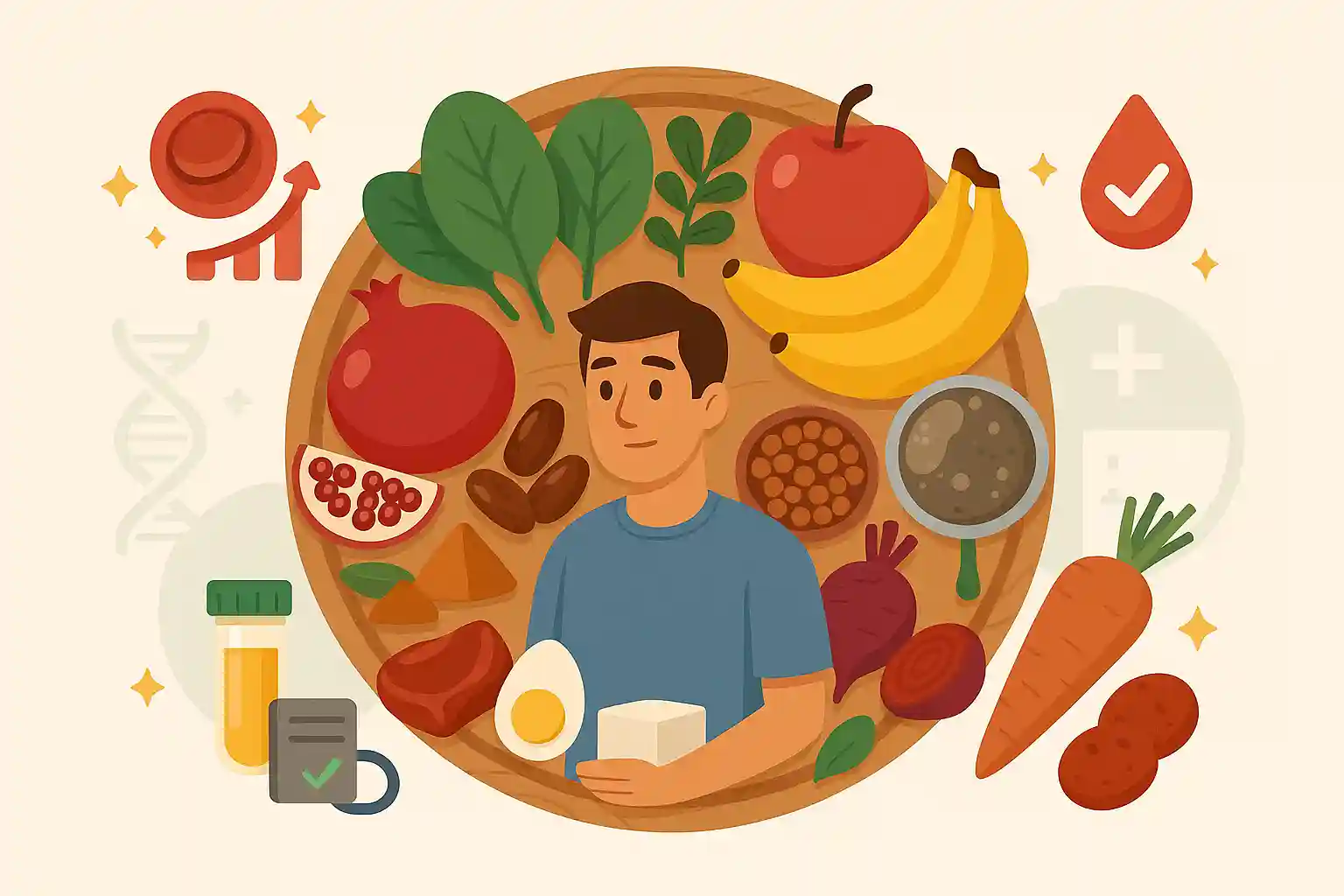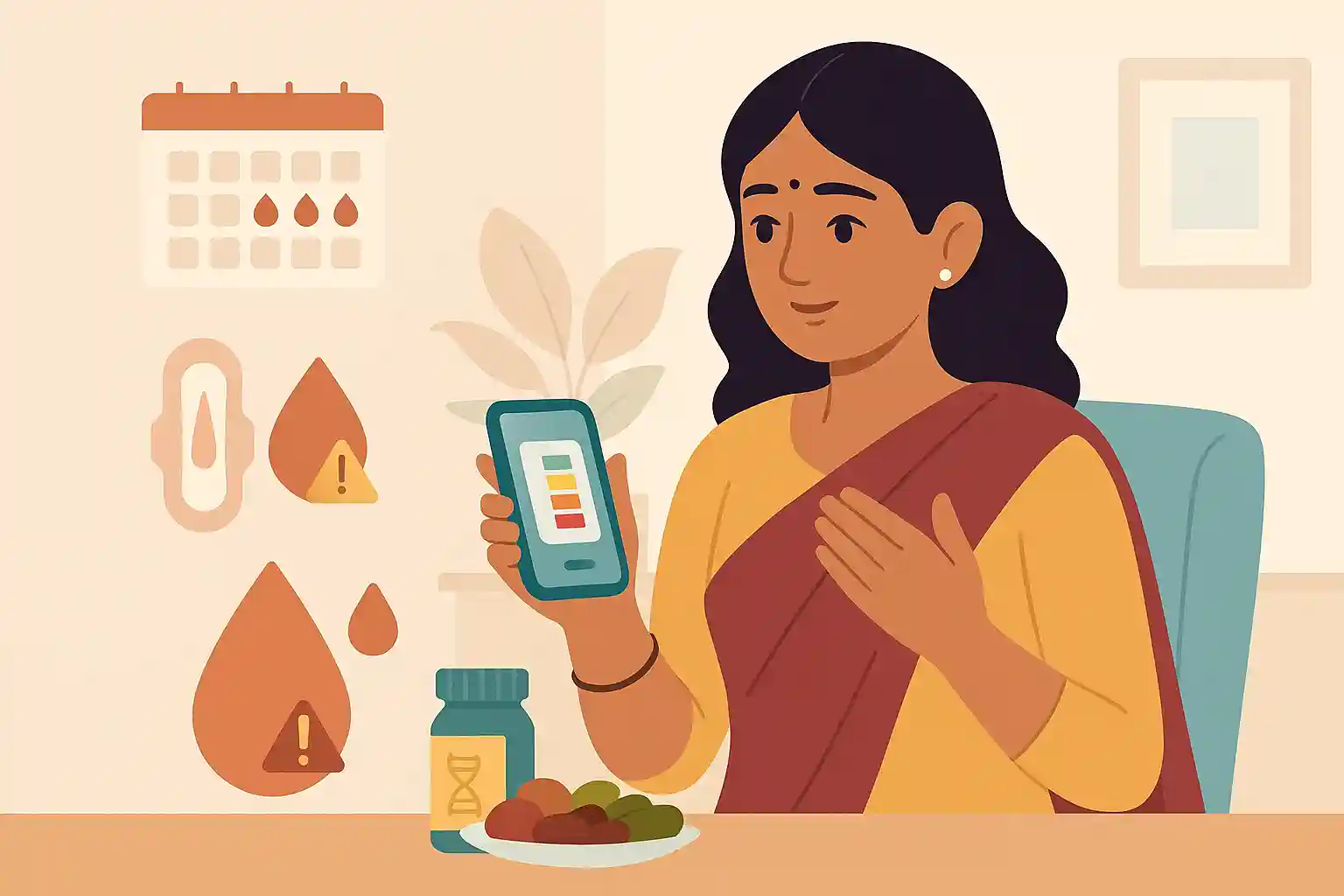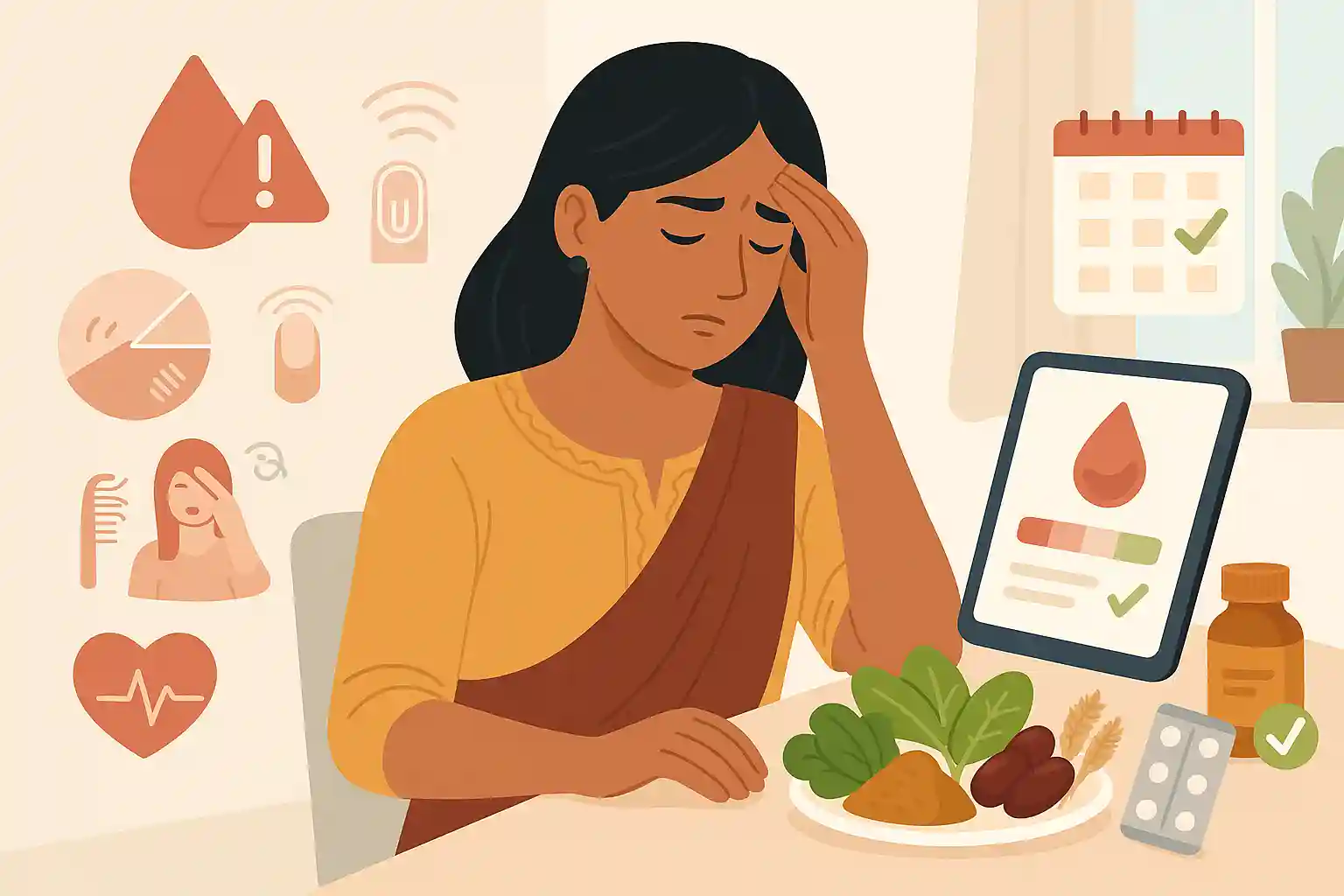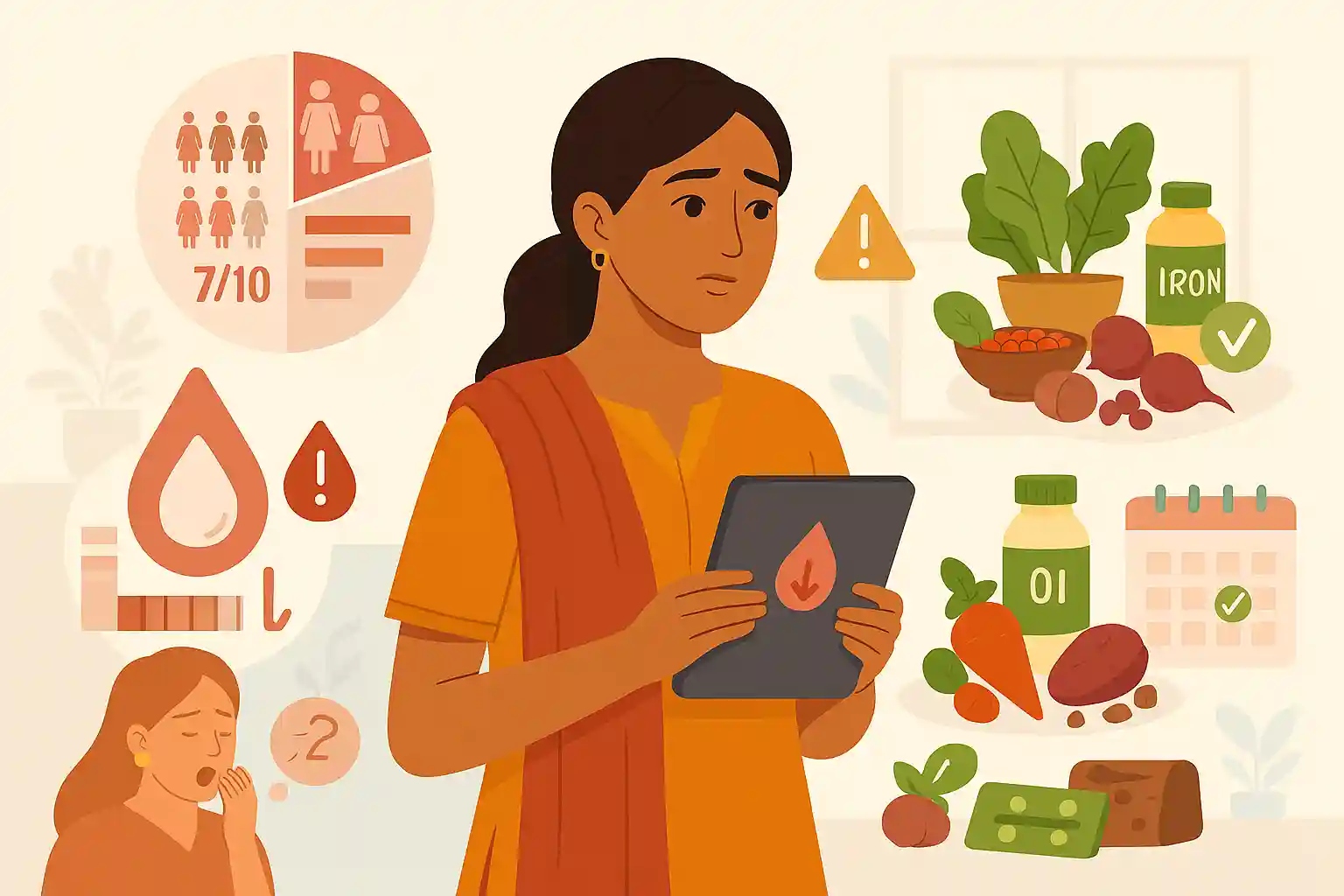Feeling constantly tired, weak, or short of breath? Low hemoglobin levels might be the culprit. Hemoglobin, the iron-rich protein in red blood cells that carries oxygen throughout your body, is essential for energy and vitality. While medical treatment may be necessary for severe cases, incorporating the right foods into your diet can naturally boost hemoglobin levels and help you feel more energetic and healthy.
Understanding Hemoglobin and Iron Deficiency
Hemoglobin is a complex protein that gives blood its red color and enables red blood cells to transport oxygen from your lungs to tissues throughout your body. When hemoglobin levels drop below normal ranges, it can lead to iron deficiency anemia, affecting millions of people worldwide.
Normal hemoglobin levels vary by age and gender:
- Adult men: 13.5-17.5 grams per deciliter (g/dL)
- Adult women: 12.0-15.5 g/dL
- Pregnant women: 11.0-12.0 g/dL
- Children (varies by age): 9.5-15.5 g/dL
Iron deficiency can result from inadequate dietary intake, poor absorption, increased needs (pregnancy, growth spurts), or blood loss. The good news is that dietary intervention can significantly improve hemoglobin levels when iron deficiency is the underlying cause.
Types of Dietary Iron
Understanding the two types of dietary iron helps optimize your nutrition strategy:
Heme Iron (From Animal Sources):
- Easily absorbed by the body (15-35% absorption rate)
- Not affected by other dietary factors
- Found in meat, poultry, and seafood
- Directly incorporates into hemoglobin production
Non-Heme Iron (From Plant Sources):
- Lower absorption rate (2-20%) but can be enhanced
- Absorption affected by other foods and nutrients
- Found in vegetables, fruits, grains, and legumes
- Requires conversion before use in hemoglobin synthesis
Top Heme Iron Foods
Animal-based foods provide the most readily absorbable form of iron:
Red Meat:
- Beef liver (18 mg per 3.5 oz) - highest iron content
- Lean beef (2.6 mg per 3.5 oz)
- Lamb (1.9 mg per 3.5 oz)
- Venison and other game meats (3-4 mg per 3.5 oz)
Poultry:
- Chicken liver (11 mg per 3.5 oz)
- Turkey (1.4 mg per 3.5 oz)
- Chicken breast (1.0 mg per 3.5 oz)
- Duck (2.7 mg per 3.5 oz)
Seafood:
- Oysters (7.2 mg per 3.5 oz) - excellent source
- Clams (3.0 mg per 3.5 oz)
- Sardines (2.9 mg per 3.5 oz)
- Tuna (1.3 mg per 3.5 oz)
- Salmon (0.8 mg per 3.5 oz)
- Shrimp (0.5 mg per 3.5 oz)
Top Non-Heme Iron Foods
Plant-based iron sources are essential for vegetarians and can complement animal sources for omnivores:
Legumes and Beans:
- Lentils (6.6 mg per cup cooked)
- Chickpeas (4.7 mg per cup cooked)
- Black beans (3.6 mg per cup cooked)
- Kidney beans (5.2 mg per cup cooked)
- Soybeans and tofu (3.4 mg per cup)
- White beans (8.0 mg per cup cooked)
Dark Leafy Greens:
- Spinach (6.4 mg per cup cooked)
- Swiss chard (4.0 mg per cup cooked)
- Kale (1.2 mg per cup cooked)
- Collard greens (2.2 mg per cup cooked)
- Turnip greens (1.8 mg per cup cooked)
Nuts and Seeds:
- Pumpkin seeds (4.2 mg per ¼ cup)
- Cashews (1.9 mg per ¼ cup)
- Pistachios (1.1 mg per ¼ cup)
- Hemp seeds (2.4 mg per 3 tablespoons)
- Sesame seeds (1.3 mg per 2 tablespoons)
Fortified Foods:
- Fortified breakfast cereals (4-18 mg per serving)
- Enriched bread and pasta (1-2 mg per serving)
- Fortified plant-based milk (varies by brand)
- Nutritional yeast (some brands fortified with iron)
Other Iron-Rich Plant Foods:
- Dark chocolate (3.9 mg per ounce)
- Quinoa (2.8 mg per cup cooked)
- Amaranth (5.2 mg per cup cooked)
- Dried apricots (3.5 mg per cup)
- Raisins (3.0 mg per cup)
- Blackstrap molasses (3.5 mg per tablespoon)
Foods That Enhance Iron Absorption
Pairing iron-rich foods with absorption enhancers can significantly increase iron uptake:
Vitamin C Rich Foods:
- Citrus fruits (oranges, grapefruits, lemons)
- Berries (strawberries, blueberries, raspberries)
- Bell peppers (red, yellow, green)
- Tomatoes and tomato products
- Broccoli and Brussels sprouts
- Kiwi fruit and cantaloupe
- Papaya and mango
Other Absorption Enhancers:
- Meat, poultry, and fish (MFP factor enhances non-heme iron absorption)
- Organic acids in fermented foods (sauerkraut, kimchi)
- Onions and garlic (sulfur compounds)
- Herbs and spices (thyme, oregano, parsley)
Foods and Substances That Inhibit Iron Absorption
Certain foods and beverages can significantly reduce iron absorption when consumed with iron-rich meals:
Strong Inhibitors:
- Tea and coffee (tannins) - wait 1-2 hours after iron-rich meals
- Red wine (tannins and polyphenols)
- Whole grains and bran (phytates) - unless fermented
- Calcium-rich foods in large amounts (dairy products)
- Egg proteins (in large quantities)
Moderate Inhibitors:
- Soy proteins (unless fermented)
- High-fiber foods when consumed in excess
- Certain spices (turmeric in large amounts)
- Zinc supplements (compete for absorption)
- Antacids and acid-blocking medications
Strategic Meal Planning for Hemoglobin Boost
Optimizing meal combinations and timing maximizes iron absorption:
Powerful Iron-Boosting Meal Combinations:
- Spinach salad with strawberries and lean beef strips
- Lentil soup with tomatoes and bell peppers
- Fortified cereal with orange juice (not milk)
- Black bean and quinoa bowl with lime and cilantro
- Tofu stir-fry with broccoli and red peppers
- Chickpea curry with tomatoes and vitamin C-rich vegetables
Meal Timing Strategies:
- Eat vitamin C-rich foods at the same meal as iron sources
- Separate tea/coffee consumption by 1-2 hours from iron-rich meals
- Take calcium supplements between meals, not with iron-rich foods
- Space out iron-rich meals throughout the day for better absorption
- Consider taking iron supplements on an empty stomach if tolerated
Special Considerations for Different Groups
Certain populations have unique iron needs and considerations:
Pregnant Women:
- Increased iron needs (27 mg daily vs. 18 mg for non-pregnant women)
- Focus on heme iron sources for better absorption
- Combine iron-rich foods with folate sources
- Avoid raw or undercooked meats for food safety
- Consider prenatal vitamins with iron as recommended by healthcare provider
Vegetarians and Vegans:
- Aim for 1.8 times the recommended iron intake due to lower absorption
- Emphasize vitamin C combinations with every iron-rich meal
- Include fermented foods to reduce phytate content
- Consider iron-fortified foods as staples
- Monitor iron status more frequently
Children and Adolescents:
- Focus on iron-rich foods they'll actually eat
- Offer fruits with iron-rich meals for natural vitamin C
- Limit milk consumption with iron-rich meals
- Make iron-rich snacks appealing (trail mix with dried fruits)
- Monitor growth spurts when iron needs increase
Athletes:
- Higher iron needs due to increased losses through sweat and foot strike
- Emphasize heme iron sources for rapid absorption
- Time iron-rich meals around training schedules
- Monitor for sports anemia in endurance athletes
- Consider professional evaluation if performance declines
Cooking Tips to Maximize Iron Content
Proper cooking methods can enhance iron content and absorption:
- Cook in cast iron cookware to increase iron content of foods
- Add acidic ingredients (tomatoes, lemon juice) when cooking in cast iron
- Steam or lightly sauté vegetables to preserve vitamin C content
- Soak beans and grains before cooking to reduce phytates
- Ferment grains and legumes when possible
- Avoid overcooking vegetables to maintain nutrient content
- Store iron-rich foods properly to prevent nutrient loss
Sample Daily Meal Plan for Hemoglobin Boost
Here's a sample day of iron-optimized eating:
Breakfast:
- Fortified oatmeal with sliced strawberries and pumpkin seeds
- Glass of orange juice or vitamin C-rich smoothie
- Wait 1 hour before having coffee or tea
Lunch:
- Spinach and lentil salad with bell peppers
- Grilled chicken breast
- Tomato-based dressing with lemon juice
Snack:
- Trail mix with dried apricots and cashews
- Small orange or kiwi fruit
Dinner:
- Quinoa and black bean bowl
- Steamed broccoli with lemon
- Small portion of dark chocolate for dessert
Monitoring Progress and When to Seek Help
While dietary changes can be highly effective, it's important to monitor progress and know when professional help is needed:
Signs of Improvement:
- Increased energy levels and less fatigue
- Improved exercise tolerance
- Better concentration and mental clarity
- Warmer hands and feet
- Improved appetite
- Better sleep quality
When to Consult a Healthcare Provider:
- No improvement after 2-3 months of dietary changes
- Severe symptoms (extreme fatigue, shortness of breath, chest pain)
- Suspected underlying causes of iron deficiency
- Need for iron supplementation guidance
- Regular monitoring of hemoglobin levels
- Difficulty maintaining adequate iron intake through diet alone
Expected Timeline: With consistent dietary changes, most people begin to feel improvements in energy within 2-4 weeks, with hemoglobin levels typically improving over 2-3 months.
Beyond Diet: Lifestyle Factors
Supporting your iron-rich diet with healthy lifestyle choices enhances results:
- Regular exercise improves circulation and oxygen utilization
- Adequate sleep supports red blood cell production
- Stress management prevents nutrient depletion
- Avoiding smoking, which impairs oxygen transport
- Limiting alcohol, which can interfere with iron absorption
- Managing any underlying conditions that affect iron status
Taking Charge of Your Blood Health
Boosting hemoglobin naturally through diet is both achievable and sustainable. By understanding which foods provide the most bioavailable iron, how to enhance absorption, and which combinations work best, you can take control of your blood health and energy levels.
Remember that consistency is key—making iron-rich food choices part of your daily routine will yield the best results. While it may take a few months to see significant changes in hemoglobin levels, many people notice improved energy and well-being much sooner.
Start with small changes, like adding vitamin C-rich fruits to iron-rich meals or choosing fortified cereals for breakfast. Gradually incorporate more iron-dense foods into your diet while being mindful of absorption enhancers and inhibitors. With patience and the right nutritional approach, you can naturally boost your hemoglobin and reclaim your energy and vitality.
References
- https://www.who.int/health-topics/anaemia
- https://ods.od.nih.gov/factsheets/Iron-HealthProfessional/
- https://www.nhlbi.nih.gov/health/anemia/iron-deficiency-anemia
- https://www.ncbi.nlm.nih.gov/pmc/articles/PMC3999603/
- https://www.nutrition.org.uk/nutritionscience/nutrients-food-and-ingredients/iron/
- https://pubmed.ncbi.nlm.nih.gov/28497380/
- https://www.cambridge.org/core/journals/proceedings-of-the-nutrition-society/article/iron-bioavailability-and-dietary-reference-values/
- https://academic.oup.com/ajcn/article/71/5/1280S/4729301
- https://www.tandfonline.com/doi/full/10.1080/10408398.2016.1239708



